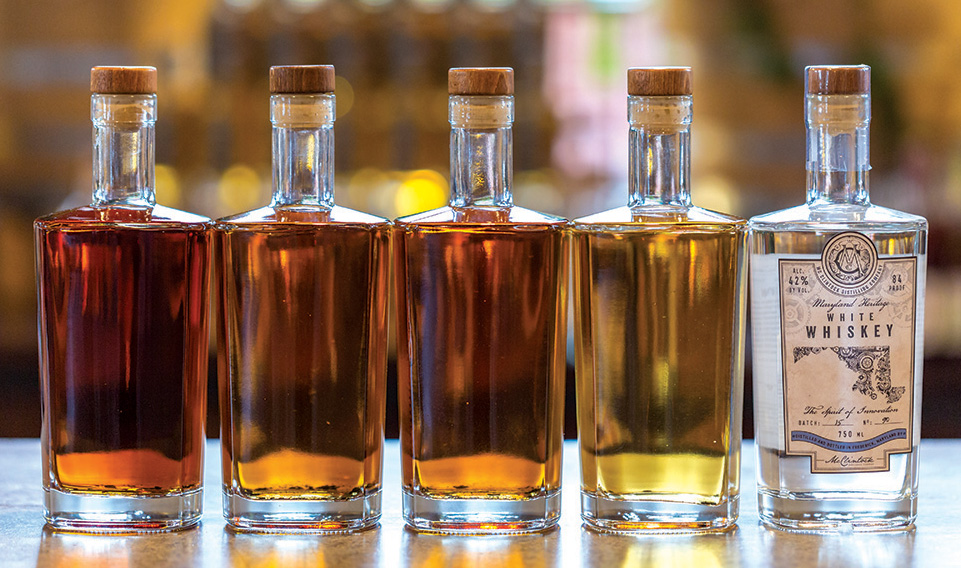BY KATE MCDERMOTT
Manhattans have a long and distinguished history in my family. For more than 60 years, my parents enjoyed their evening cocktail hour with an amber-hued blend of vermouth and bourbon whiskey. When the cosmopolitan and Long Island ice tea became all the rage, their drink always struck me as a bit old-fashioned. Pun intended.
But like many of the cocktails that are trending in modern mixology, Manhattans are making a comeback. Drinks International, a magazine covering the global beer, wine and spirits industry, named the Manhattan one of the top five best-selling cocktails of 2017. But many bartenders are now putting a new twist on this old classic by making it with rye whiskey instead of bourbon.
That may explain why Maryland rye is experiencing a rebirth following its near-death after Prohibition. Although it was among the nation’s most popular spirits before 1920, Maryland distilleries, many of which were in urban areas, were forced to sell their valuable properties to make up for the loss of revenue caused by Prohibition. When the taps started flowing again in 1933, the state’s rye whiskey production was never the same.
Generally distilled from a mash bill of rye and corn, and perhaps another grain such as malted barley or wheat, the state’s signature whiskey generated centuries of enthusiasts. Revolutionary War soldiers imbibed on it, as did Union soldiers who brought the recipe home to places like Massachusetts and Colorado after the Civil War.
Today, Frederick County’s distilleries are paying homage to this Free State classic with their own rye releases. Tenth Ward Distilling Company in Frederick has created a White Caraway Rye that is 80 percent malted rye and 20 percent malted barley.
McClintock Distilling Company has also thrown its hat in the ring with its Maryland Heritage White Whiskey that is made from a mash bill of 75 percent organic rye and a mix of 25 percent corn and wheat.
While Tenth Ward and McClintock obtain their grains from regional farms, Springfield Manor’s rye whiskey is crafted from nearly all home-grown ingredients. The corn that gives the rye a sweetness comes right from the Thurmont farm’s 130 acres.
Filtered water from the property’s limestone aquifer rivals the limestone water that has
long been considered the special ingredient in Kentucky bourbon. And although in previous years Springfield Manor has imported its rye from Wisconsin, owner Amie St. Angelo said this year the rye will be grown on their own farm.
In following with tradition, these distillers age their ryes in charred oak barrels for at least two years.
And although each is crafted with subtle ingredient variations, these Maryland rye whiskeys all serve up a familiar flavor: think of a hint of rye bread in glass. The distillers refer to this as the “rye punch.” It creates an interesting flavor layer in cocktails such as Firestone Culinary Tavern’s Back to School, which features a blend of Tenth Ward’s White Caraway Rye, Campari, hazelnut liqueur, lime juice and simple syrup.
Then there’s the Clark Gable, which is a modern twist on my parents’ traditional bourbon
Manhattan. It features a blend of McClintock Distilling’s Maryland Heritage White Whiskey (rye) with white vermouth and orange bitters.
The cocktail has a slightly complex flavor, with hints of both pepperiness and sweetness from the whiskey’s mash of rye and corn.
I can’t say for sure it would have passed muster with the folks, but I liked it. So frankly, my dear, I don’t give a damn.

